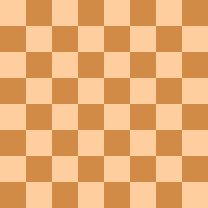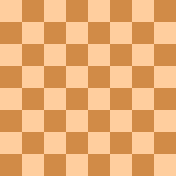
- Chess World Cup
- FIDE Grand Prix
- Olympiad
- World Championship
- List of strong tournaments
- List of world championships

- Checkmate patterns
- Chess openings
- Chess strategy
- Chess tactics
- Chess theory
- Endgames
- Pawn structure
- Problems/Compositions












|
|||||||||||||||||||||||||||||||||||||||||||||
| Moves | 1.e4 e5 2.Nf3 Nc6 3.Bc4 Bc5 | ||||||||||||||||||||||||||||||||||||||||||||
|---|---|---|---|---|---|---|---|---|---|---|---|---|---|---|---|---|---|---|---|---|---|---|---|---|---|---|---|---|---|---|---|---|---|---|---|---|---|---|---|---|---|---|---|---|---|
| ECO | C50-C54 | ||||||||||||||||||||||||||||||||||||||||||||
| Origin | 16th century | ||||||||||||||||||||||||||||||||||||||||||||
| Named after | Italian: "Quiet Game" | ||||||||||||||||||||||||||||||||||||||||||||
| Parent | Italian Game | ||||||||||||||||||||||||||||||||||||||||||||
| Synonym(s) | Italian Opening | ||||||||||||||||||||||||||||||||||||||||||||
The Giuoco Piano (Italian: "Quiet Game"; pronounced ) is a chess opening beginning with the moves:
White's "Italian bishop" at c4 prevents Black from advancing in the center with ...d5 and attacks the vulnerable f7-square. White plans to dominate the center with d2-d4 and to attack the black king. Black aims to free his game by exchanging pieces and playing the pawn break ...d5, or to hold his center pawn at e5.
Common alternatives to 3...Bc5 include 3...Nf6 (the Two Knights Defense) and 3...Be7 (the Hungarian Defense). Much less common are 3...d6 (the Semi-Italian Opening), 3...g6, 3...Nd4 (the Blackburne Shilling Gambit), and 3...f5.
The Giuoco Piano is the oldest recorded opening. The Portuguese Damiano played it at the beginning of the 16th century and the Italian Greco played it at the beginning of the 17th century. The opening is also known as the Italian Game (Pinski 2005:5), although that name is also used to describe all games starting with 1.e4 e5 2.Nf3 Nc6 3.Bc4, regardless of Black's third move (Gufeld & Stetsko 1996:5). The Giuoco Piano was popular through the 19th century, but modern refinements in defensive play have led most chess masters towards openings like the Ruy Lopez that offer White greater chances for long term initiative.
In modern play, grandmasters have shown distinct preference for the slower and more strategic Giuoco Pianissimo (4.d3). Anatoli Karpov used the Giuoco Pianissimo against Viktor Korchnoi twice in the 1981 World Championship tournament, with both games ending in a draw; Garry Kasparov used it against Joël Lautier at Linares 1994, resigning after 26 moves; Vladimir Kramnik chose it against Teimour Radjabov at Linares (2004); Viswanathan Anand used it to defeat Jon Hammer in 2010; and Magnus Carlsen used it against Hikaru Nakamura at London 2011, winning in 41 moves.
The main continuations on White's fourth move are:
In the main line (Greco Variation) White plays 4.c3 in preparation for the central advance d2-d4. Black can try to hold a strong point in the center at e5 with 4...Qe7 or he can counterattack with 4...Nf6. The center-holding line can continue 4...Qe7 5.d4 Bb6 6.0-0 d6 7.a4 a6 8.h3 Nf6 9.Re1 0-0.
The more aggressive 4...Nf6 was first analyzed by Greco in the 17th century. In the Greco Attack White uses a major piece sacrifice to create a trap. Play continues:
4. c3 Nf6 5. d4 exd4 6. cxd4
Main line (Greco Attack)| a | b | c | d | e | f | g | h | ||
| 8 |

                             |
8 | |||||||
| 7 | 7 | ||||||||
| 6 | 6 | ||||||||
| 5 | 5 | ||||||||
| 4 | 4 | ||||||||
| 3 | 3 | ||||||||
| 2 | 2 | ||||||||
| 1 | 1 | ||||||||
| a | b | c | d | e | f | g | h | ||
6... Bb4+ 7. Nc3 Nxe4 (see diagram)
8. 0-0 Bxc3! 9. d5
9... Bf6
10. Re1 Ne7 11. Rxe4 d6 12. Bg5 Bxg5 13. Nxg5 h6!?
14. Bb5+
14... Bd7 15. Qe2 Bxb5 16. Qxb5+ Qd7 17. Qxb7
17... 0-0
If White does not want to gambit material, instead of 7.Nc3 he can play 7. Bd2, which can continue 7... Bxd2+ (Kaufman recommends 7...Nxe4!? 8.Bxb4 Nxb4 9.Bxf7+ Kxf7 10.Qb3+ d5!? [10...Kf8 11.Qxb4+ Qe7 12.Qxe7+ Kxe7 is safer, reaching an equal endgame] 11.Ne5+ Ke6! 12.Qxb4 c5!?) 8. Nbxd2 d5 9. exd5 Nxd5 10. Qb3 Nce7 (10...Na5 is an alternative, inviting a repetition of moves after 11.Qa4+ Nc6 [threatening 12...Nb6] 12.Qb3 Na5) 11. 0-0 0-0 12. Rfe1 c6. In this position White has more freedom, but his isolated d-pawn can be a weakness. Note: 7.Nd2 is also a viable choice of move for White, although this still only offers approximate equality. It has not been a popular choice among human players, but it seems to be recommended by computer engines.
Giuoco Pianissimo| a | b | c | d | e | f | g | h | ||
| 8 |

                                |
8 | |||||||
| 7 | 7 | ||||||||
| 6 | 6 | ||||||||
| 5 | 5 | ||||||||
| 4 | 4 | ||||||||
| 3 | 3 | ||||||||
| 2 | 2 | ||||||||
| 1 | 1 | ||||||||
| a | b | c | d | e | f | g | h | ||
With 4.d3, White plays the Giuoco Pianissimo (Italian: "Very Quiet Game"). White aims for a slow buildup deferring d2-d4 until it can be prepared. By avoiding an immediate confrontation in the center White prevents the early release of tension through exchanges and enters a positional maneuvering game. If White plays c2-c3, the position can take some characteristics of the Ruy Lopez if his bishop retreats to c2 via Bc4-b3-c2. Despite its slow, drawish reputation, this variation became more popular after being taken up by John Nunn in the 1980s. The common move orders are 4.c3 Nf6 5.d3, and the transposition via the Bishop's Opening: 2.Bc4 Nf6 3.d3 Nc6 4.Nf3 Bc5 5.c3.
Codes from the Encyclopaedia of Chess Openings are: